Rounding out the unit-centric part of the Eldar codex review, we now turn to the units we haven’t covered yet: Wraith-type units and the Avatar. It is the former that a lot of fuss has been made about over the internet – but is this upset justified? Or is this reaction disproportionate to the actual threat represented by these units. Check out the Tactics Corner for more great reviews!
Bring the D. The biggest change, which has been covered a bit in previous posts, is the change to the Distort rule. Continuing the theme of whoever wrote this codex really liking the fiction behind the Eldar, the weapons that tear a hole in reality to pull both souls and material into the warp have been universally re-written as Strength D weapons. It’s not that they do a lot of damage, or hit you with a lot of kinetic force – there’s simply a chance you cease to exist. From a fluff perspective, I rather like this as an idea – it very much plays into the idea that this is the twilight of the Eldar, and that they’re breaking out weapons that in a less dire age would be shunned as horrific. That they’re not going quietly into the darkness. But how does it impact gameplay?
It very much depends on who you’re shooting.
Consider the Wraithcannon as a stand-in for the S10 AP2 Distort guns in the previous edition which are now D AP2 weapons in the current codex. How much more dangerous did these guns actually get?
The answer is it depends. Lets look at some simulation results for 2,500 games, assuming 5 Wraithcannon shots (a standard size unit of Wraithguard) firing at a number of different targets. As always, you can follow along with the code here.
First up, some Space Marines, with the purple distribution indicating the old-style gun, and the light blue the new-style Strength D gun:
Doesn’t really matter. With only one wound for each marine, the d3 or d6+6 wounds coming from Strength D doesn’t matter – both guns effectively kill a Marine on a 3+ followed by a 2+.
How about for a multi-wound, tougher creature? Lets consider a unit of two Talos-like monstrous creatures – Toughness 7, 3 Wounds:
Yikes. The most common outcome shifts from one dead monster to two. The old style guns were capped by the number of hits they could manage – at best, they could do 5 wounds. With Strength D, the ability to do d3 wounds means hitting monstrous creatures and other multi-wound models much more heavily.
How about vehicles? Below is this same squad, firing at a Chimera-type vehicle with AV 12 and 3 HP, and a Land Raider-type vehicle with AV 14 and 4 HP. Lets see what happens:
The vast majority of the time, a full squad of Strength D firing Wraithguard can kill the vehicle in question. Not surprisingly, this difference gets more pronounced the tougher the vehicle gets, as Strength D effectively ignores armor values. Either unit is dangerous to vehicles, but there’s basically no circumstance where it’s reasonable to prefer Strength 10.
This will also be true – actually moreso – for the D-scythe, which has gone from S4 to D. Again, while this largely won’t matter against troops, it makes them considerably more dangerous against multi-wound models or vehicles. Consider the following, simulating a D-scythe firing against our pseudo-Talos, assuming all five can hit both targets:
While the -1 penalty is a big deal, resulting in the most common result very few wounds, and both monsters dying is now a vanishingly rare outcome, it is a vast improvement over the previous iteration of the D-scythe, which at only S4 was largely dependent on auto-wounding on a 6. I think it’s still possible to charge D-scythe wraithguard with high-wound, high value models, but it’s definitely much less safe. But there’s definitely a counter – troops. Preferably as cheap as they come. The solution to Strength D weapons is to drown them in single-wound enemies. Now lets move on to unit-specific changes…
Wraithguard. The biggest change is what you’ve seen above – monstrous creatures and vehicles should now regard the fairly short-ranged Wraithguard as a threat to be avoided. Beyond this, they remain entirely unchanged. D-scythes may be taken as an upgrade, though you sacrifice some range in exchange for potentially more hits beneath a flame template, or with the d3 overwatch hits if you’re anticipating getting charged. Note that the D-scythe subtracts 1 from the Strength D result table, meaning it does nothing on a 1 or 2, and cannot get the “Rocks Fall, Everyone Dies, No Saves Allowed” result of a 6.
While still tough, and mobile if they’re near a Spirit Seer, I think the Wraithguard have excellent cause to consider a Wave Serpent as their transport – it will definitely help them get into range faster and keep them protected from high strength, low AP weaponry. While they can walk across the table, I suspect D-phobia will mean they draw a lot of firepower. Like Dire Avengers, they’re less hurt by the Wave Serpent not being an assault transport – their role is to shoot, not to charge, so unloading, firing, and then possibly using Battle Focus to move backwards is a useful strategy. Conveniently, the Wave Serpent has enough room, with 5 Wraithguard, to also accommodate a Spirit Seer. The increased firepower of the Wave Serpent at short range may also be a useful way to address large units of cheap troops being positioned to interfere with your Wraithguard.
Wraithblades. I suspect Wraithblades will be an aficionado’s unit in this codex, just with how good Wraithguard are at the moment. They slightly discounted (2 points) over their previous version, and their Wraithguard brethren, and they picked up Rage, which is nice given the fairly low number of attacks the Wraithblades have. They continue to be able to use Ghost Swords for S6 AP3 attacks, or trade in their pair of swords and lose an attack in exchange for S7 AP2 attacks along with a 4++ save. As they won’t be doing any shooting, it’s less important that they have a Spirit Seer babysitter along for the ride.
Either one of those makes for a very tough close-combat unit, capable of making an absolute mess of Marine-type or Terminator-type units respectively. They’re definitely a solid choice if you’re looking for a close combat unit that’s less reliant on shattering a unit in a single blow, and more capable of getting stuck in and grinding things down.
Like their brethren, they can take a Wave Serpent, but without being an assault transport, I think it’s of dubious utility. They can either advance relentlessly down the board on foot (possibly shielding more fragile units), or a squad of 5 fits inside a Dark Eldar raider, and their durability should protect them if or when the Raider bites the dust.
Hemlock Wraithfighter. Another beautiful model that didn’t get much play last edition, it’s possible the Hemlock has come into its own. At 185 points, it remains the same price as it was, but it has gotten significantly better for the price. It’s guns are now a somewhat short-range (18″) pair of Strength D-1 Blast weapons, which as with the results for the D-scythe above will I think be considerably more useful than previous – Str 4 was not exactly an inspiring ground attack weapon. Especially, as mentioned, for attacking multi-wound models or vehicles, though as with previous versions it is utterly helpless against other aircraft.
The Hemlock’s pilot has now gotten considerably better as well, roughly comparable to a Spirit Seer, at Mastery Level 2 and capable of taking Sanctic Demonology, Runes of Battle or Telepathy. Conceal in the Runes of Battle is potentially handy for keeping the flier alive, and the other powers work as essentially a mobile malediction platform, but honestly I’d take a long, hard look at Telepathy, as it’s maledictions are a bit better or at least comparable. This is especially true when you combine it with the Mindshock Pod, which puts enemy units within 12″ at -2 leadership when taking morale, pinning and fear tests. The amount of leadership-based hijinks this plane is capable of is insane.
In terms of survivability, there’s the aforementioned psychic powers, and Spirit Stones that will allow you to ignore Crew Shaken on a 2+ and Stunned on a 4+. But you’re asking an AV10 all around flier to be acting in a close support role, getting quite close to the enemy to deliver its warp-rifty, psychically charged payload. That’s dangerous. Small arms fire can take it down, and any kind of dedicated AA will eat it for lunch. If you’re planning to get much done with the Hemlock, I’d consider units with Skyfire to be your top priority.
Wraithlords. Existing in the awkward place between the infantry Wraithguard and the Wraithknight, the Wraithlord is essentially unchanged, save for its scatter laser weapon option getting cheaper. They’re tough, slow, dangerous monstrous creatures that can serve as either heavy weapons platforms, high strength melee units, or both. And having been on the receiving end of several of them, they’re quite formidable. If you liked them before, you’ll like them now. If you didn’t…there’s plenty else to take.
Wraithknight. The heavyweight champion of a Wraith-based list, the Wraithknight was one of the premier units of the previous codex. Like many new units however, it had some oddities to it – taking both “small” weapon choices didn’t make any sense because they were unlikely to fire, and the visually spectacular sword unfortunately did very, very little for the combat prowess of the Wraithknight, making it a poor choice.
Many of these oddities have been fixed – and in the process, the Wraithknight is an absolute beast. Getting 55 points more expensive, it’s now a Lord of War, and if anything, it’s a bargain at that cost. It is now a Jump Gargantuan Creature, befitting its considerable height, giving it Feel No Pain, greater resistance to poison, sniper weapons, Instant Death, etc. It’s twin heavy wraithcannons are long-range Strength D weapons, and if equipped with a Ghostglaive, it’s now Strength D in close combat, hitting at I5.
As a mobile gun-platform, the twin heavy wraithcannons can potentially target and destroy two high value targets a turn. Alternately, the suncannon is a S6 AP2 Heavy 3 Blast weapon that comes with a 5++ invulnerable save shield as well, making the Wraithknight more durable and capable of murdering large numbers of high value infantry (where the 2 Strength D shots won’t get much work done). As a melee heavy-hitter, it also has a 5++ save and a master-crafted weapon, which will help mitigate those occasional disastrous rolls of 1 when you absolutely have to murderize everything.
As Laser lock is no longer a thing, you’re free to choose any shoulder weapon you please, though my own inclination is toward the star cannons – if the Wraithknight is targeting something, it should be high value, at which point the better AP of the star cannon is worthwhile.
With all these upgrades, it’s hard to regard the Wraithknight as anything other than an absolute beast, and very possibly cheaper than it should be. It will definitely draw fire, and is vulnerable to Strength D coming in return, or any sort of rending attack, but it should weather a great deal.
Avatar of Khaine. The shard of a fallen War God, the Avatar is a formidable close combat opponent, with WS 10, 5 attacks and 5 wounds. Wailing Doom, his weapon, will put the hurt on anything he hits, and do it at the staggeringly high initiative of 10. He also buffs units around him, creating a 12″ bubble of Fearless, Furious Charge and Rage.
There are however several issues – he’s restricted to being on foot, and while T6 and protected with a 3+/5++ save, it’s likely that he’ll take some fire coming in, and high volumes of fire can whittle him away. Restricted to being on foot, he’s relatively speedy given Fleet and Battle Focus, but depending on deployment it could be a very long walk before this monster gets into combat. He also competes for the lone Lord of War slot with the extremely good Wraithknight, and this does make him hard to take if your local group has banned Lords of War – a stance I clearly consider flawed. But if you are running a list built around foot-slogging assault Eldar, the Avatar makes a wonderful (and awesome looking) anchor, drawing fire from your other more fragile troops, keeping them from running, and hopefully tearing something apart when he does get into combat.
And there we have it. The end of the Eldar units, and we approach the end of this review series. Up next is a discussion of the new and pretty awesome Craftworld Eldar formations, and a holistic view of playing the Eldar as a faction.
This post was originally posted on Variance Hammer. If you liked it, and would like to see more positive, quantitatively (for the most part) driven thoughts on 40K, please visit, or consider supporting their Patreon campaign.

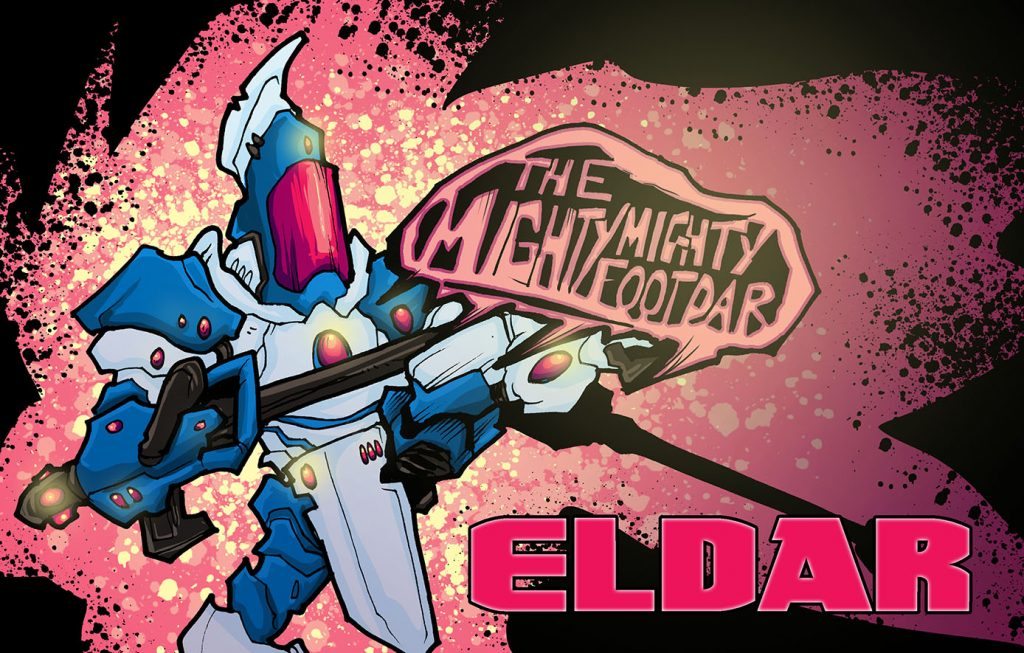
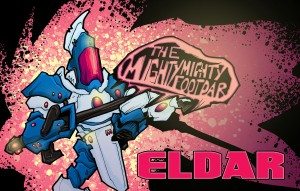
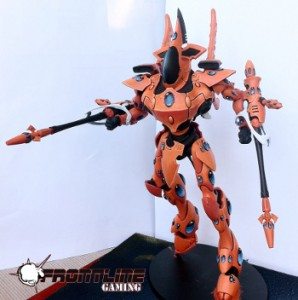
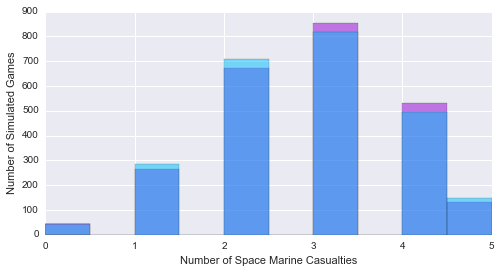
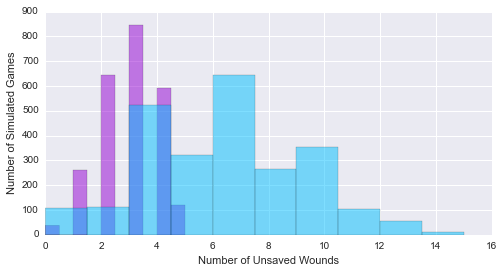
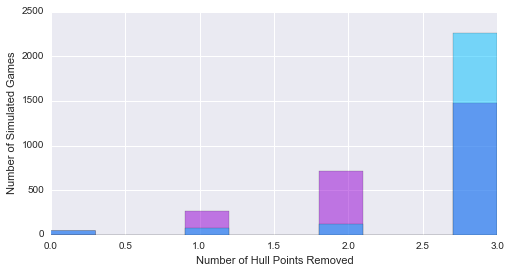
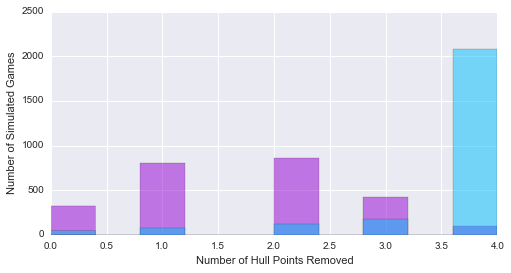
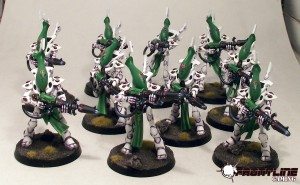
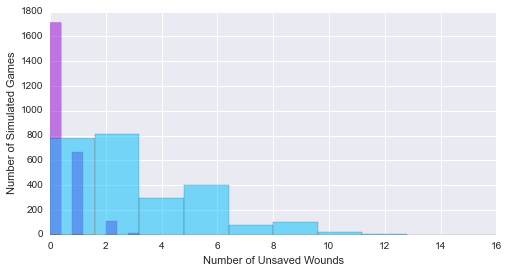
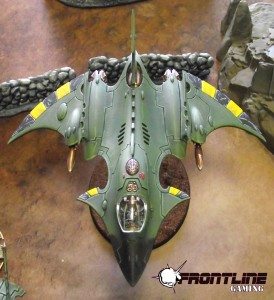
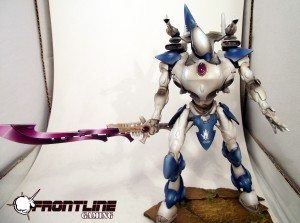
I feel a big missing piece (for this section) is ranged d-weaponry in the ITC, seeing as this is an ITC focused site. I believe it was changed D2 and an auto 2 on a 6, greatly reducing the potency of d-weapons. All of the sudden the glaive and shield looks rather tasty on a wraithknight.
One of the biggest effects to the changes is wraithguard with d-cannons are basically put into the trash bin of the eldar codex IMO. Now one of the main uses for d-weaponry is vs vehicles namely knights and other superheavies, so lets consider the modified d-cannons and d-scythes vs fire dragons, lets assume all are coming in via a webway portal and we will also assume the fire dragons aren’t in an aspect host.
D-cannons:
-Average: With BS4 on average we are expecting 3/4 hits with 1/2 saves from the ion shield, basically 2 wounds on average causing 3 HP on average.
-Best Case: 5 hits, no saves, 10 HP
D-scythes:
-Average: With positioning at best 4 hit, 2 are saved, 2 wounds, 3 HP on average.
-Best Case: 4 hits, no saves, 10 HP
Fire Dragons:
-Average: BS 4 (lets assume an exarch also), 4 hits, 2 saves, 2 Pens, generally 1 will explode, for 2 + D3, 4 HP.
-Best Case: 5 hits, 5+5D3 HP.
Against a Knight Fire Dragons will on average be at least equal to, if not better then both Wraithguard options, and on slightly above normal dice (3 pens with 2 explosions) they will kill a Knight while both Wraith units require exceptionally good dice to kill a Knight. Against most other vehicles (3 HP or less) all 3 will generally always kill, d-scythes removing dice from the equation. Also consider a 5 man unit of Fire dragons + exarch is 30 points less then D-cannons, and 90 less then D-scythes.
Now the above is really harping on vehicles (fire dragons clear focus). The big advantage of d-weapon wraithguard over fire dragons is their ability to kill models T5+ substantially better, so you are gaining quite a bit of flexibility with d-weapons. This flexibility is great, but is being worse at killing vehicles (the main purpose of these units in an Eldar list), worth the additional points for the flexibility? D-scythes maybe, d-cannons not even close.
True, FLG is an ITC-focused site. These articles come from Variance Hammer’s blog, where he has a different take on Ranged D (and restrictions on Lords of War). D isn’t nerfed everywhere; and isn’t even nerfed in every ITC event. I’m playing in an ITC tournament this coming Sunday that has D, 2++ rerollables and Invisibility (and probably a Warhound or two showing up as well).
I appreciate your analysis (it resembles my own, where I usually just squint and narrate my way through a round of shooting with one unit or another).
Assuming that Fire Dragons are NOT in an Aspect Host is not helpful–Eldar players that field aspect warriors without putting them in Formation should be subject to serious scrutiny. If you’re trying to emphasize how good Fire Dragons are (‘Look, they still blow stuff up even without +1BS’), I get that. Otherwise, analyzing them the way they’ll likely be played is more useful.
Cheers!
As mentioned, this originally came from my site, and was written before the ITC changes went into effect. I’m actually working on a “What did the ITC changes actually do” post, but I’ve had a very busy time with my (actual) job.
S10 is more reliable than Destroyer weapons against av10 and av11, as S10 auto pen and auto glance but with Destroyer weapons there is a risk of doing nothing at all.
It will more commonly cause _some_ damage to those units (unless they have a cover save), it’s true, but Str D is still much more likely to kill or seriously damage them than S10 is.
Yeah, in both cases the vehicle will probably be no more.
The other really big issue I see with D weaponry is the effect of the 6 rolls on things that are shelling out a lot of Points for Invul Saves, Cover buffs, and/or Eternal Warrior. It’s hard to model, because it’s a potentially huge swing, that shows up relatively rarely. If you’re blasting a bunch of D at my Command Squad, and it wipes out one of the regular dudes, well, there’s plenty that can pink mist one of those guys, but when it one-shots a Chapter Smasher, that’s a whole different story.
It’s a big issue with LoW, too, now that they’re becoming more common in the Game, but not so common that the law of averages starts to come into effect on something like this.
Another big thing with str d is the ability to ignore fnp and reanimation and eternal warrior.. Fnp is becoming a lot more common as well. Str 10 was able to ignore t5 or less fnp but d scythe never did and many monstrous and garangatuan creatures are just hard countered by str d. Making eldar the best army to kill eldar.